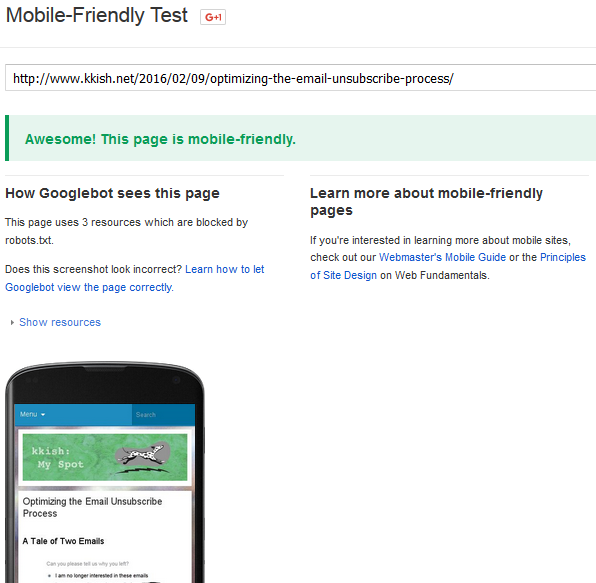 In case you missed it, Google recently announced plans to make mobile-friendliness an even more important part of its ranking algorithm. What that means is that it’s even more important than before for your website to display well on mobile devices.
In case you missed it, Google recently announced plans to make mobile-friendliness an even more important part of its ranking algorithm. What that means is that it’s even more important than before for your website to display well on mobile devices.
The reason for this is sound. It isn’t just Google trying to dictate changes that it wants you to make to your website. Google is reflecting the reality of how people use the Internet.
An ever-increasing portion of Internet activity takes place on smartphones and other Internet-enabled mobile devices. People want to access the Internet all the time, everywhere, and they’re doing it on tiny screens. If your website doesn’t give them a good experience, they won’t use it.
[tweetthis hidden_hashtags=”#SEO”]” If your website doesn’t give #mobile users a good experience, they won’t use it.”[/tweetthis]
So all Google is doing is saying that it’s not going to send people to web pages that won’t give them a good experience. Don’t blame Google. But do take a good look at your website and make sure that it’s ready for Google’s increased focus on mobile accessibility and experience.
When you do, there are a couple of important points you need to keep in mind:
- Don’t just look at your home page. Having a mobile-friendly home page isn’t enough. Look at your website analytics, and I’ll bet that only a small portion of your traffic comes in through your home page. Google and other search engines are especially good at driving traffic to deeper page of your website—pages with rich, valuable content; article pages, especially—so the display of these pages is critical.
- Use your website analytics to help you identify the most important mobile devices for which your site should be optimized. This isn’t about Google specifically, but about making a good experience for your visitors.
- If you use third-party vendors/platforms for any portions of your website—an Etsy store, for example, or a job board for your association website—check those as well.
Identifying and fixing mobile display problems
The good news is that there are some easy-to-use tools available to help you. Google makes it very simple to see whether it considers any page of your website mobile-friendly. Its Mobile-Friendly Test tool lets you enter any page URL and quickly find out how Google sees it, and what (if any) changes are needed to improve its mobile accessibility. If you’re lucky, you’ll see something like this for every page:

Here’s what you don’t want to see:
 Google’s got other tools that can help you as well. One of the best is the mobile usability report in Webmaster Tools, which identifies every page of your website where Google sees mobile accessibility issues. Whether or not you use Google AdSense, you can read and learn from the AdSense “multi-screen guidelines as well.
Google’s got other tools that can help you as well. One of the best is the mobile usability report in Webmaster Tools, which identifies every page of your website where Google sees mobile accessibility issues. Whether or not you use Google AdSense, you can read and learn from the AdSense “multi-screen guidelines as well.
It might not always be easy to fix problems on your website, but there’s no excuse for not making sure mobile users can access and enjoy your site. It needs to be optimized for all kinds of devices.
Just ask Google.
[tweetthis hidden_hashtags=”#SEO”]”There’s no excuse for not making sure #mobile users can access and enjoy your site.”[/tweetthis]
